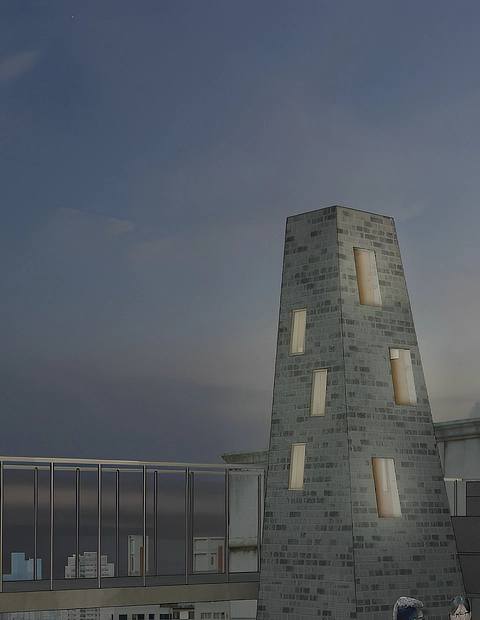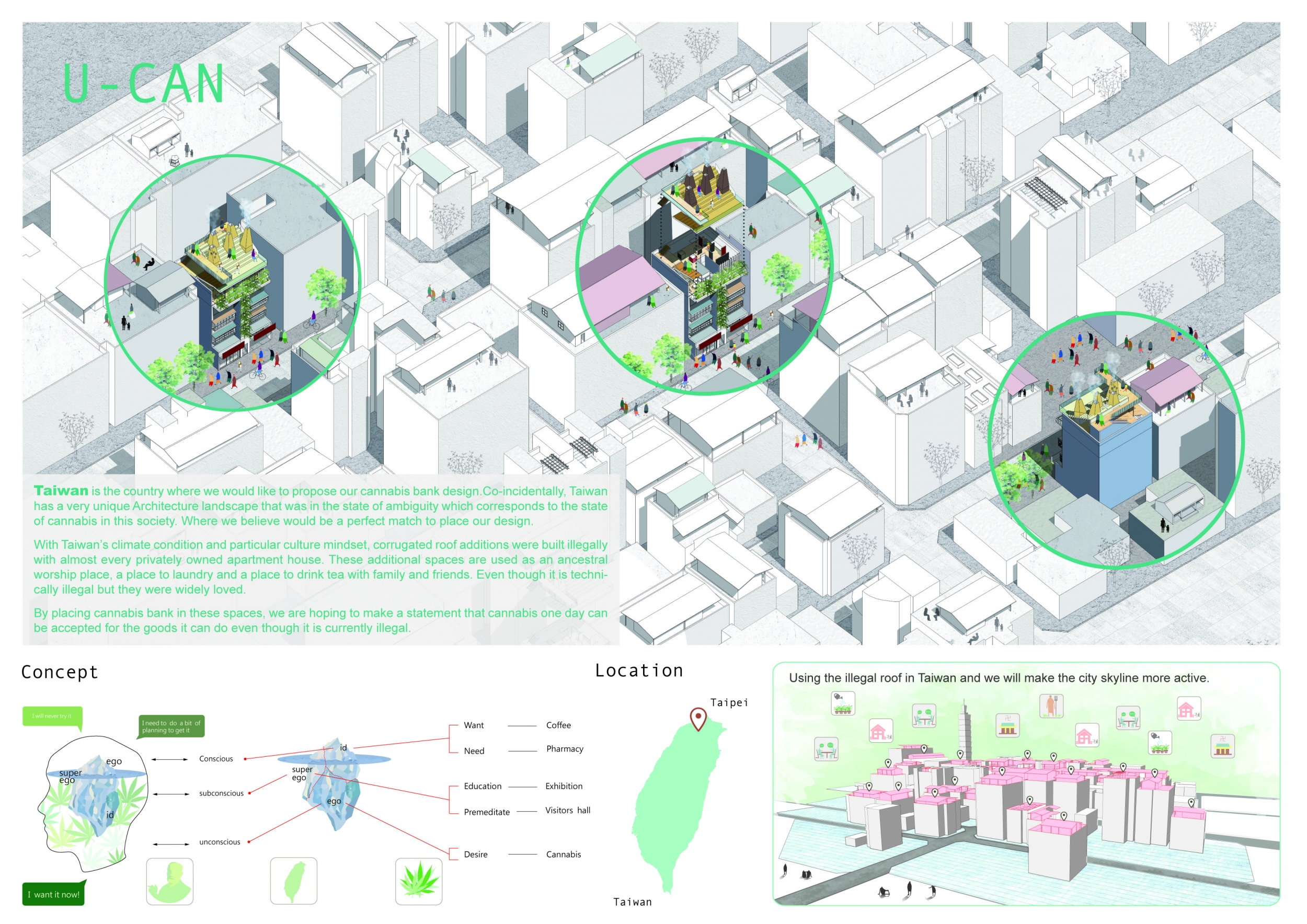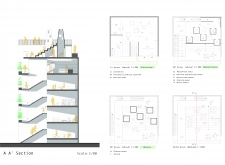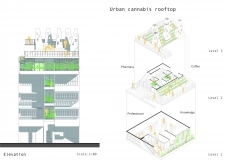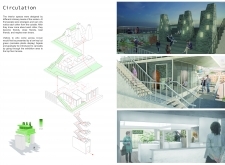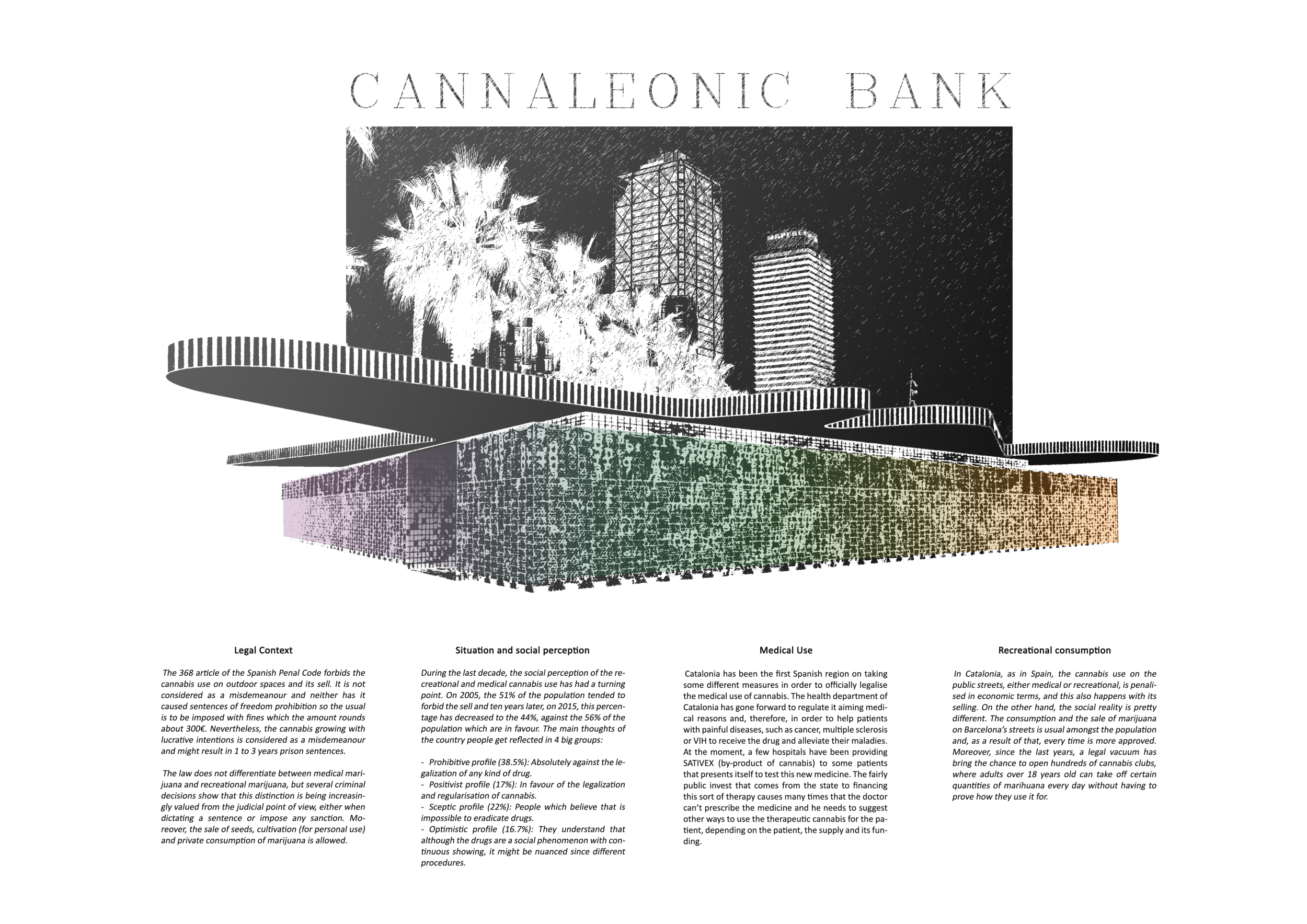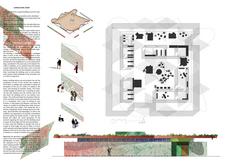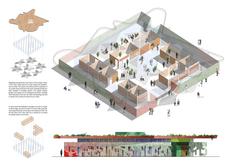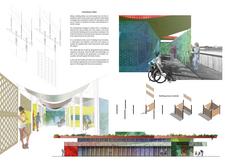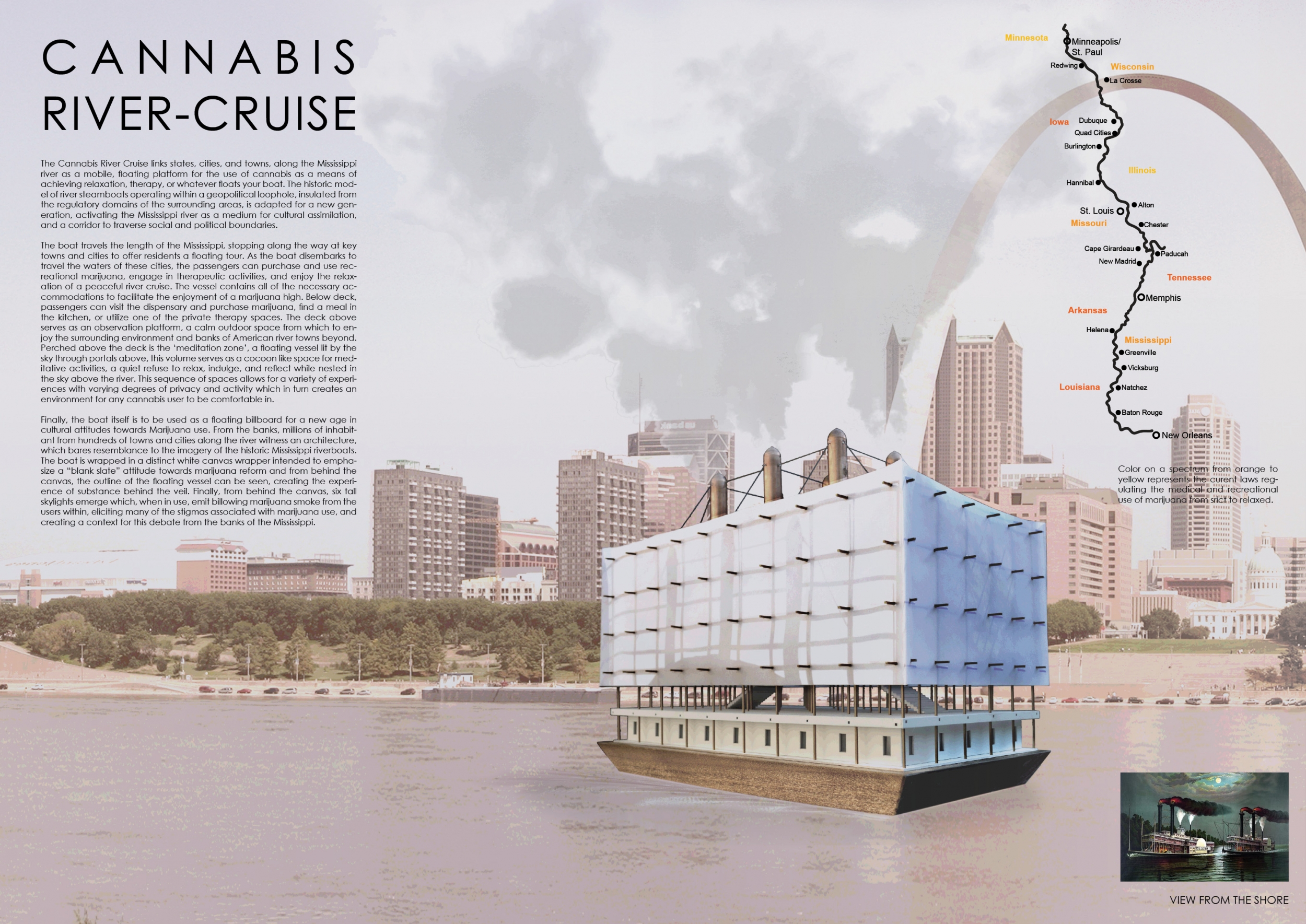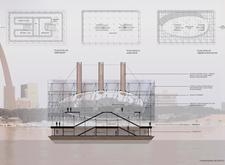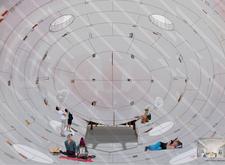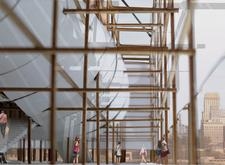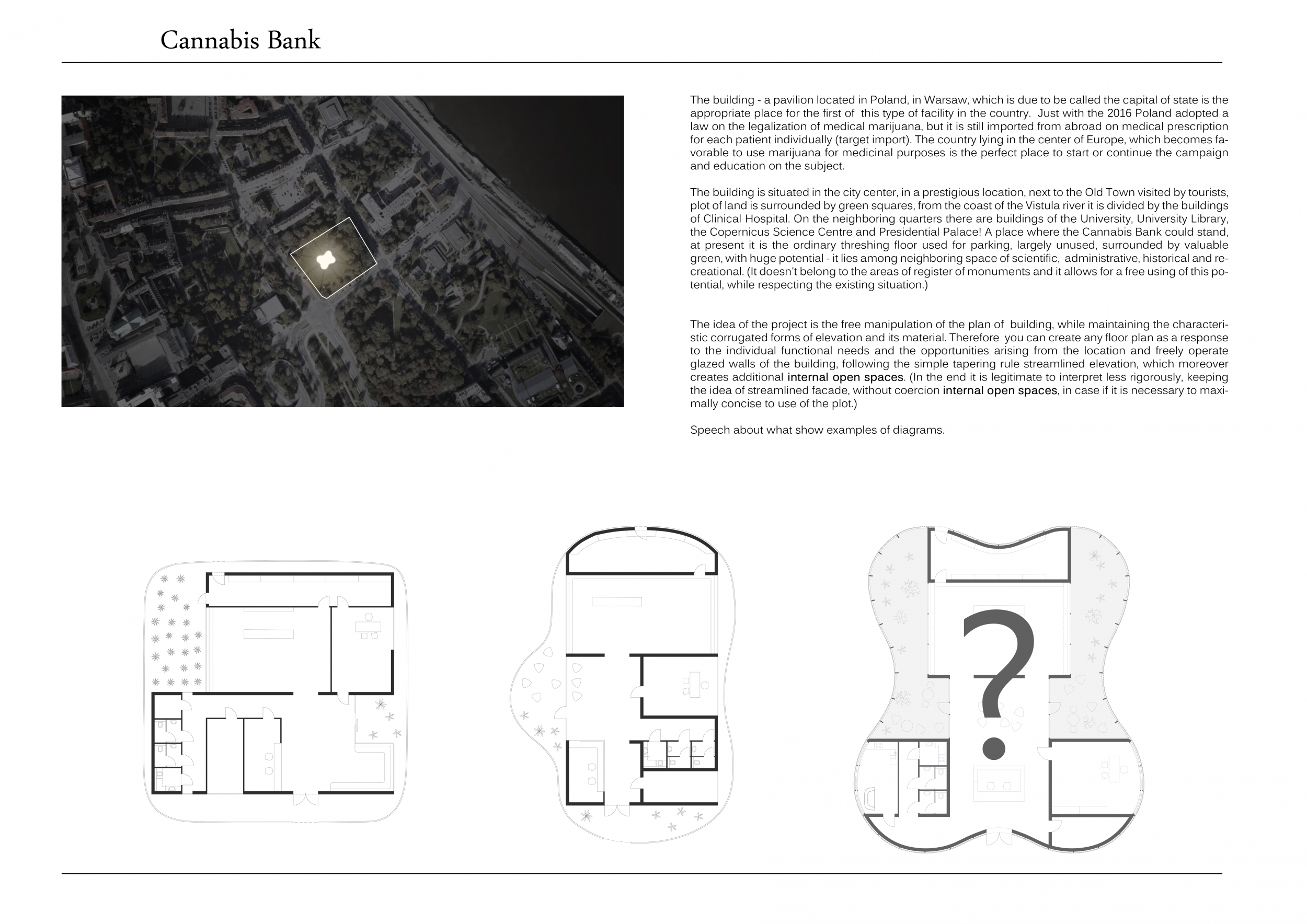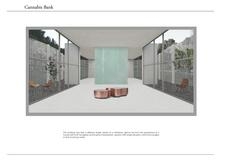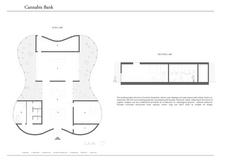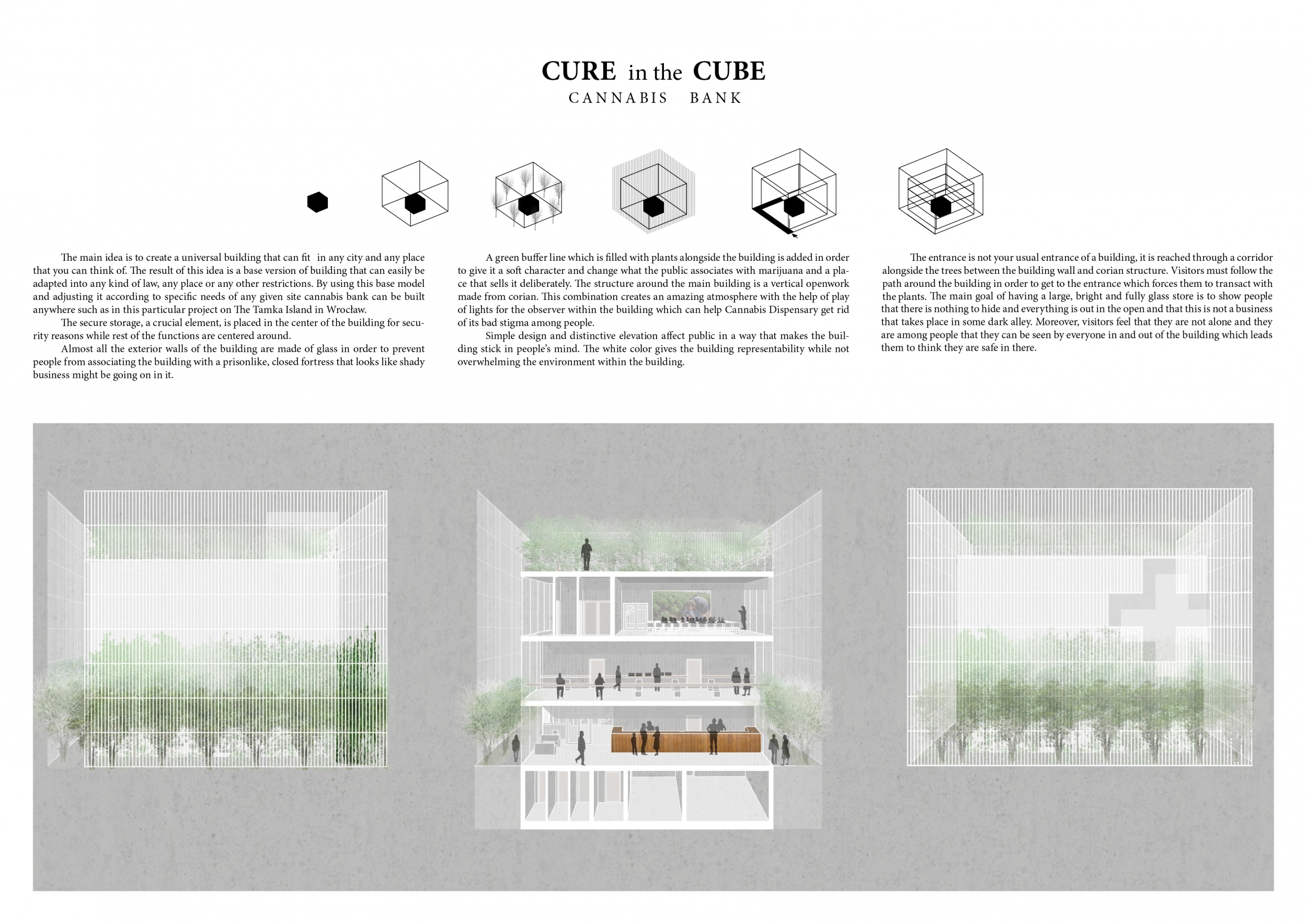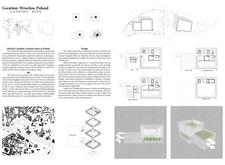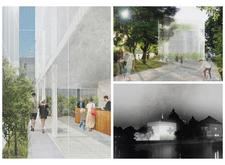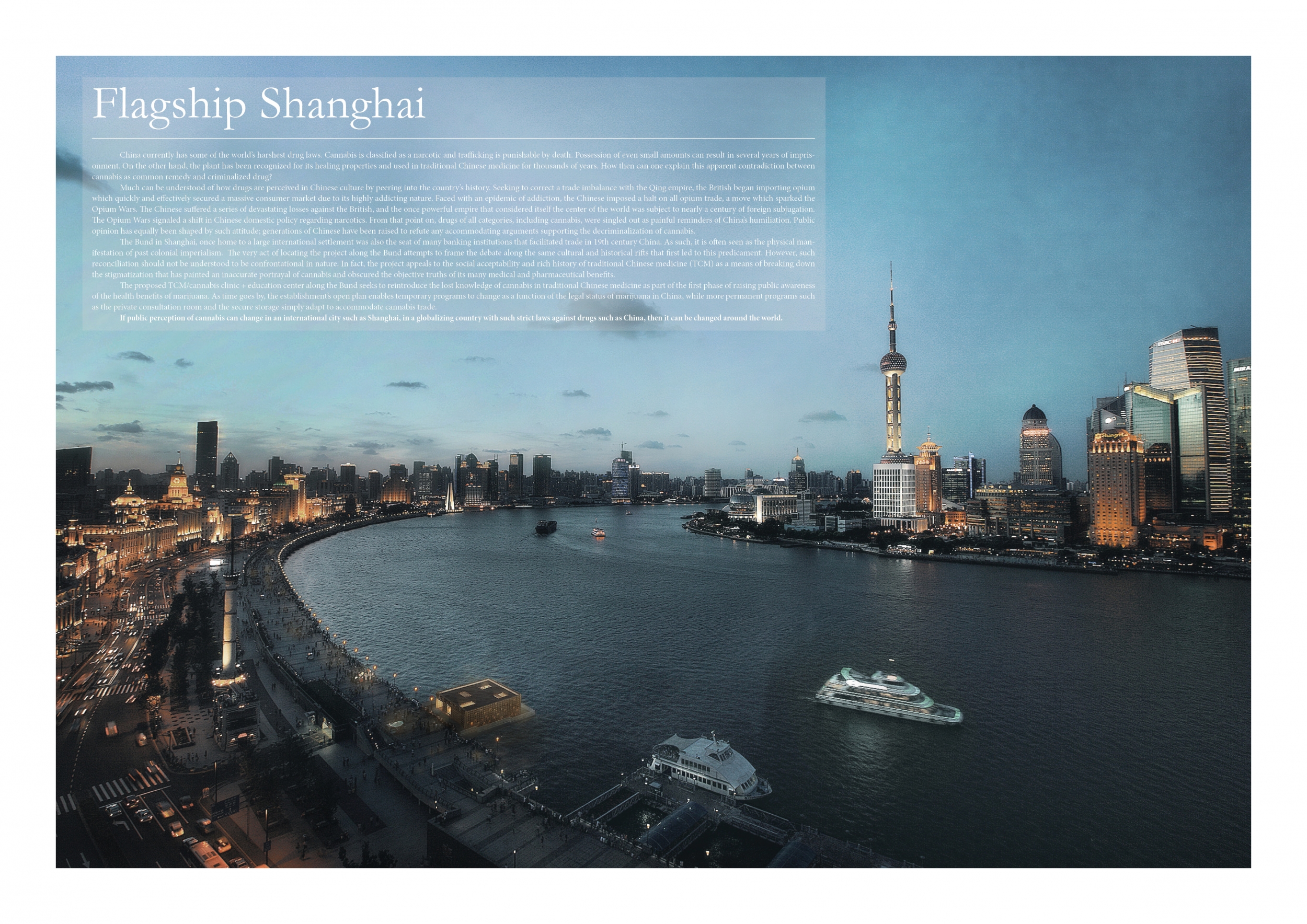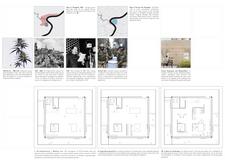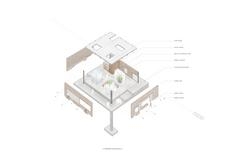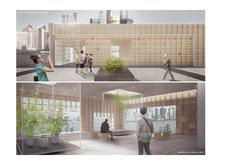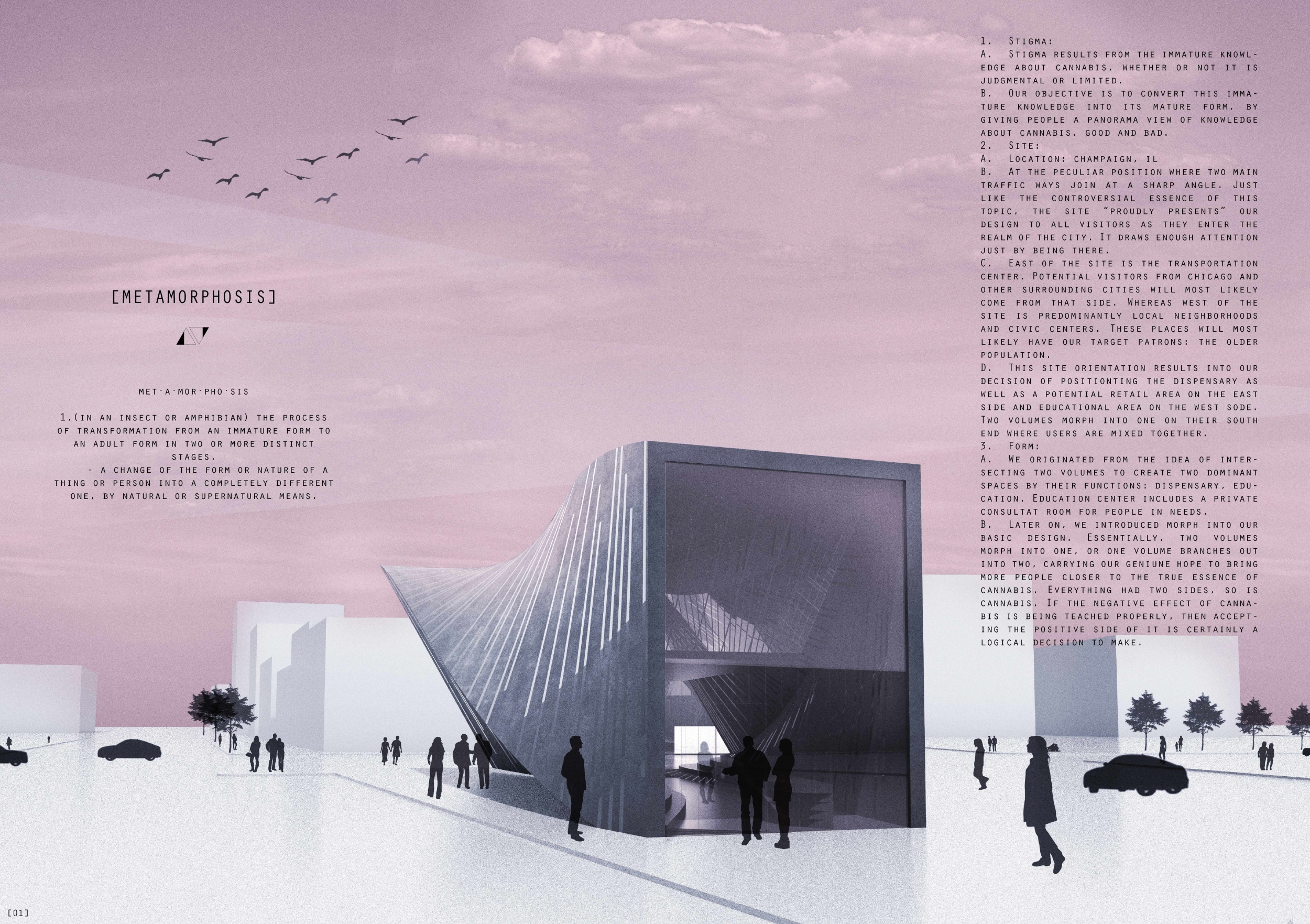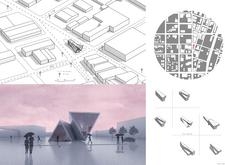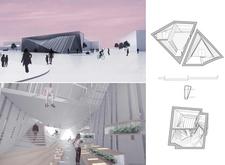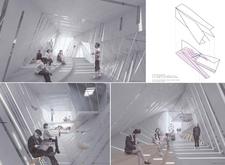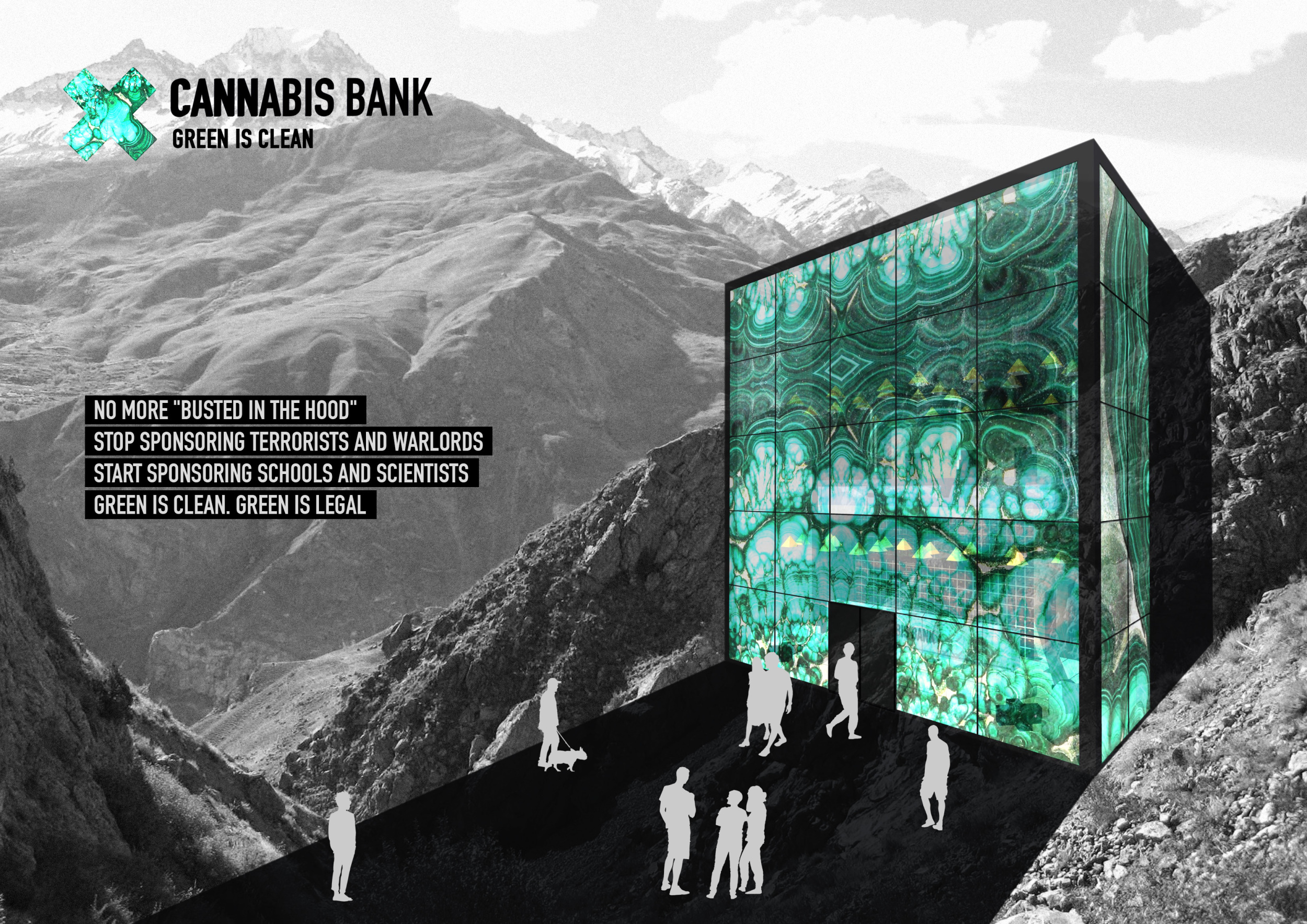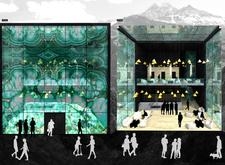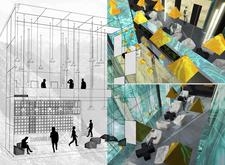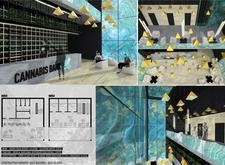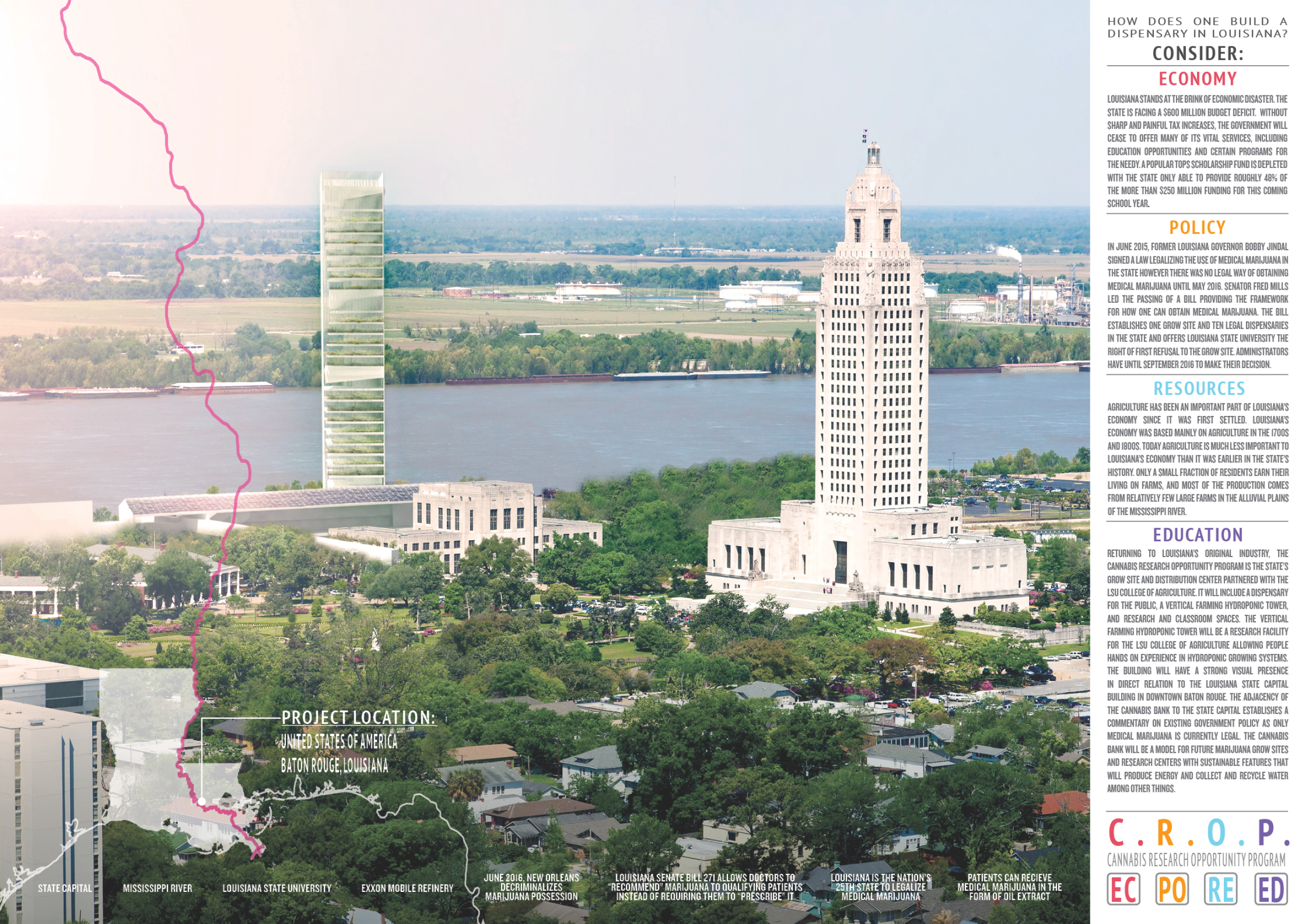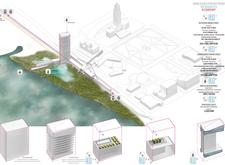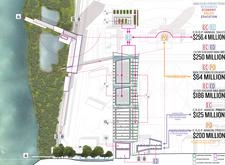Introduction
An architecture of and for Cannabis would seem as confounded or bemused as the position of Cannabis in contemporary culture. In much of the world, Cannabis is controversial, challenging, considered in many places taboo, yet is relevant as a concern of legality, medicine, health, ethics, and economy. Historically precedented in popular culture or as a building typology by the public house, salon, tea house, cafe, and pharmacy, a contemporary architecture of Cannabis is yet to be defined. The political, economic, and legal consequences in society, however are manifold.
An array of projects were submitted for consideration, all of which contribute to this discourse. The jury showed preference for projects that creatively address the profound and consequential social considerations at stake, particularly with respect to culture, health, economy, and policy. Projects deemed successful acknowledge and present a cohesive argument regarding several correlated issues including: consideration of individual experience — medicinal, psychological, and spiritual; sensitive accommodation in space and circulation for both the intimate and social; clearly defined context and locale; and innovation of an undefined spatial, tectonic, and architectural typology.
1st Prize Winner
U-Can
We believe architecture visionary competitions are very much in touch with current social affairs. By participating in these competitions, we can stay in tune with world events and maintain our high design enthusiasm level.
Read full interview Taiwan
Taiwan
Jury feedback summary
U-CAN places the Cannabis dispensary on roof additions typical in cities of Taiwan. Although illegal, these roof additions have traditionally been permitted by Taiwanese authorities and are commonly used as places of household ancestral worship as well as shared social space.
2nd Prize Winner
Cannaleonic Bank
We like competitions because we can work from the beginning. Almost always the start of a journey is better than the return. To develop an idea and take it though until the end without losing it during the trip, is very easy in this type of competition and it attracts us especially.
Read full interview Spain
Spain
Jury feedback summary
The second place proposal is successful in its interpretation of the local politics surrounding Cannabis use, combined with clever architectural language to communicate a clear concept that is both iconic and versatile. The proposal is strategically sited in the medical research park in Barcelona, Spain, adjacent to the beach, symbolically representing both the dichotomy of public perception surrounding medicinal and recreational Cannabis use.
3rd Prize Winner
Cannabis River Cruise
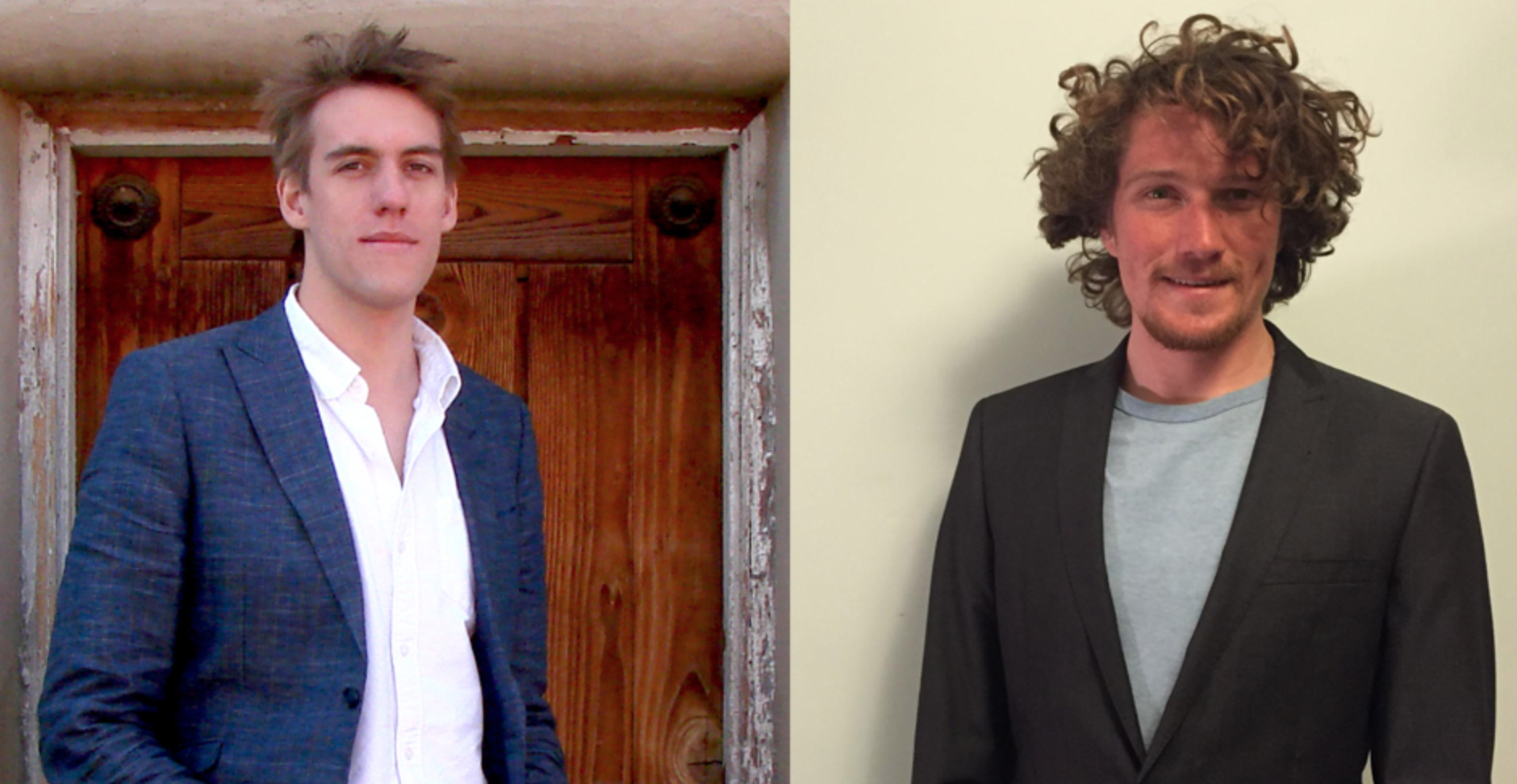
Architecture visions competitions create a platform for us to work through design problems that really enable us explore the potential of what architecture can be. It's part of trying to understand and develop what techniques and sensibilities work for us, and to develop our design identity. For us, these kinds of competitions create a space for that kind of exploration.
Read full interview United States
United States
Jury feedback summary
The third place proposal astutely associates the steam boat as an architectural typology to house the Cannabis dispensary. Historically, steamboats played a major role in the advancement of American society, carrying goods and passengers up and down the Mississippi River. As a major form of transportation, the architecture of passenger steamboats adapted an extravagance of great halls, colonnades, and class, serving as a form of promenade for prominent individuals.
